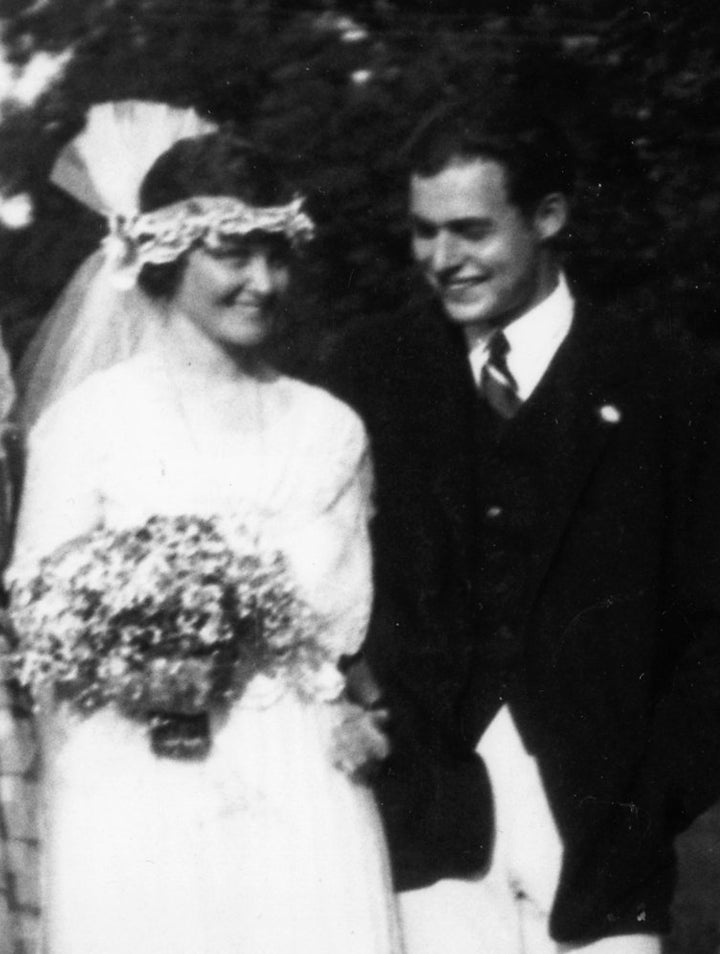
From the age of 21, and for 40 serially (semi-) monogamous years, Ernest Hemingway was virtually always married--plunging like a half-blinded bull from the disastrous end of one marriage (there were four altogether), to the heady, precipitous beginning of the next. I sometimes think of him as Spider Man, swinging through the hazard-strewn cataract of a Metropolitan avenue, detaching from the skyscraper behind him only when firmly suckered onto the one ahead.
Except we're talking about women, not buildings.
Ernest and his first wife, Hadley Richardson, were married fewer than five years when he took up with Pauline Pfeiffer, a fashion editor for Vogue magazine in Paris who was a good friend to them both. Pauline was Catholic and intent on marriage, and the two became tacitly engaged before Hadley was fully conscious of the affair. Even then, Ernest didn't want to give up either woman. Ultimately, it was Hadley who backed away, believing that she couldn't force Ernest to stay with her if he were truly in love with another.
Although Hadley was far too generous and compassionate a woman to see things this way, Pauline got her comeuppance in 1936, when the tawny-haired and coltish Martha Gellhorn walked into Hemingway's then-lair, the dimly lit Key West bar, Sloppy Joes. When introductions were made, he recognized her as the author of the recently published and highly acclaimed novella, The Trouble I've Seen, which critics were comparing to his work ("Her writing burns," wrote Lewis Gannett, "...Hemingway does not write more authentic American speech"). Coincidentally, she was from St. Louis, where both Hadley and Pauline had lived and been schooled. And then there were her lovely shoulders in a black sundress, and the legs that went on forever. Pauline had prepared a lovely crawfish dinner for him that night, and was forced to make excuses to their guests when he didn't come home.
The on-duty Sloppy Joes bartender would later liken Ernest and Martha's meeting to Beauty and the Beast. You can judge for yourself, as well as catch most of the salient highs and lows of their stormy, war-punctuated love affair in Philip Kaufman's Hemingway & Gellhorn, which premiered May 28th on HBO. Reviewers are comparing the verbal sparring between Nicole Kidman and Clive Owen to Lauren Bacall and Humphrey Bogart's in the film version of To Have and Have Not, a manuscript Hemingway was working to complete at the time he was famously eying Gellhorn and her sundress.
Is it ironic or entirely right that in To Have and Have Not, Hemingway has a female character issue a warning to all women expecting monogamy from husbands who "aren't built that way":
"They want some one new, or some one younger, or some one that they shouldn't have, or some one that looks like some one else...Or they just get tired, I suppose. You can't blame them if that's the way they are...The better you treat a man and the more you show him you love him the quicker he gets tired of you. I suppose the good ones are made to have a lot of wives but it's awfully wearing trying to be a lot of wives yourself."
Pauline had tried hard to be enough wives, herself, to secure her place in Ernest's life, setting out to run his household so splendidly he needn't concern himself at all. He didn't. And though it's easy to read the above lines as advance notice from Ernest to Pauline, it might also have served to forewarn Martha, who was unseated by the fourth Mrs. Hemingway, Mary Welsh, four years into her own marriage, in 1944.
If you believe what you read, Hemingway threw Martha over because he couldn't stand that she had brains and bravery to boot--that she had too much of the "grace under pressure" she'd learned by his side in the Spanish Civil War. But it's just as possible that Hemingway "wasn't built" for monogamy, but for extremity, and that no one could have kept him from falling for the next some one else. And the next.
Hemingway clearly needed to live at the edge of experience, in that contracted space where life felt like war, and was a kind of war. His work was always better when he was emotionally under siege, and in the space just after. "How swell life gets," he wrote, "once the hell is over."
It's long been in fashion to believe that Hemingway hated women--but closer to the truth, I think, that he only wished he did. So he could be free of his attraction to them and his involvement with them, and be rid of the dread and desperation that came when no attachment, no matter how tender or passionate, managed to "kill his loneliness."
Each of his wives was magnificent in her own way. If Hadley was the patient and nurturing saint, Pauline was the intelligent general, well-oiled, endlessly competent. Martha was the soldier, the tiger, with her own books and fierce ambitions. Mary was long-suffering, loyal to the catastrophic end. He loved them each deeply and inexpertly. He also loved himself inexpertly.
Perhaps his true love could only ever be his work, which mattered more than living. When, at the end of his days, he lost his ability to write, his lifelong struggle with depression and thoughts of suicide overcame him, and there was no woman, and no amount of love, that could save him from himself.